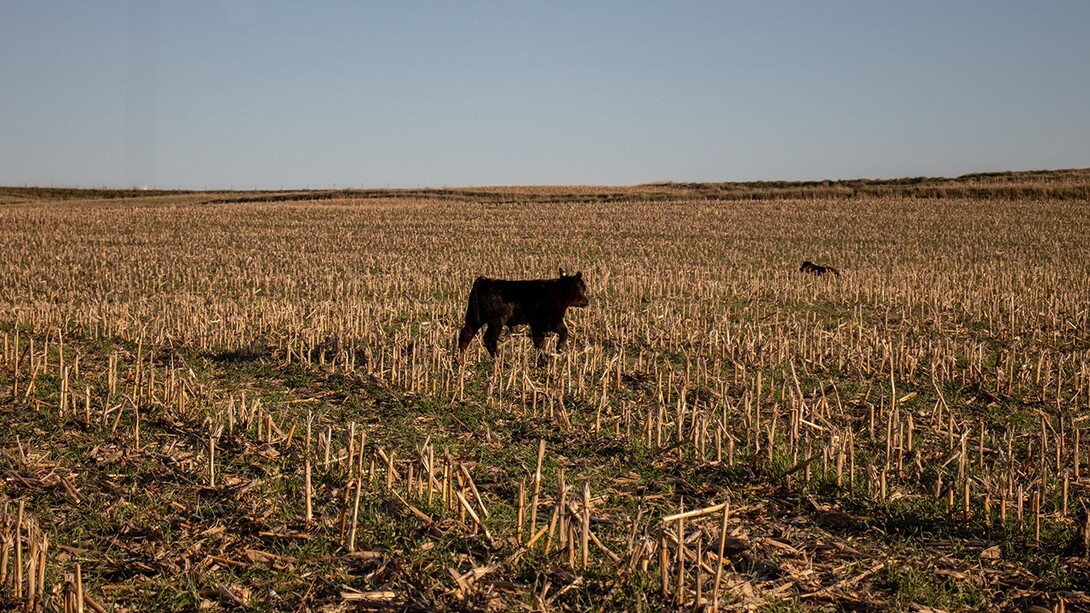
Lincoln, Neb. —Integrating cover crops into livestock operations presents substantial opportunities for economic and environmental benefits, according to a new USDA Economic Research Service report featuring contributions from faculty members and graduate students in the University of Nebraska-Lincoln’s Center for Agricultural Profitability.
The report, “Cover Crops on Livestock Operations: Potential for Expansion in the United States,” offers in-depth insights into the integration of cover crops with livestock operations. The research was led by Maria Bowman, a research agricultural economist with USDA ERS, with contributions from other researchers at USDA, Ohio State University and Iowa State University.
Center for Agricultural Profitability researchers contributing to the report include Jay Parsons, professor and farm and ranch management specialist; Mary Drewnoski, associate professor and livestock systems specialist; Daren Redfearn, professor and crop residue and forage specialist; and former graduate students Maroua Afi (UNL Department of Agricultural Economics), Fernanda Souza Krupek (UNL Department of Agronomy and Horticulture), and Aubree Beenken (Iowa State University Animal Science).
Key findings from the study indicate that while current adoption rates are relatively low — only 14% of cattle operations with cropland used cover crops as of 2017 — there are notable variations depending on the type of operation. Dairy and feedlot operations are more likely to utilize cover crops due to their high forage value, which exceeds the costs of production. The report highlights that grazing or harvesting cover crops is financially beneficial, especially in regions such as the U.S. Eastern Uplands and parts of Texas and Louisiana.
"Our findings demonstrate that cover crops can significantly enhance the profitability and sustainability of livestock systems," said Parsons. “By improving soil health and providing additional feed resources, cover crops and annual forages, in general, play a crucial role in the future of sustainable agriculture.”
Redfearn emphasized the practical applications of their research. "This study not only identifies the economic benefits but also maps out the potential for future expansion and adoption of cover crops in livestock operations across various regions," he said.
The research team from the University of Nebraska-Lincoln played a pivotal role in analyzing data and contributing to the comprehensive analysis provided in the report. Their work underscores the potential for significant expansion in the use of cover crops, particularly in areas where integration with livestock is feasible.
“For stakeholders in the agricultural sector, this report serves as a critical resource for understanding the benefits and implementation strategies of cover crops in enhancing the sustainability and profitability of livestock operations,” Drewnoski said.
Other findings from the report include:
- The profitability of cover crops in an integrated livestock system primarily varies with the choice of cover crop species and management practices, the amount of cover crop forage being consumed by livestock and the agronomic effect of the cover crop on the cash crop.
- The profitability of cover crops in an integrated livestock system also varies with the fixed costs of the grazing/harvesting system, the size of the farming operation, producer experience, and regional variability in production systems, soils and climate. These factors can also be barriers to the adoption of cover crops in livestock operations.
- Grazing and harvesting cover crops for forage is common in cattle operations with cover crops. In 2021, 72% of dairy operations and 89% of cow-calf operations with cover crops reported harvesting or grazing at least some of their cover crop acreage.
For more information, visit the USDA Economic Research Service website at www.ers.usda.gov. The full report is also available on the Center for Agricultural Profitability’s website, https://cap.unl.edu.
About the Center for Agricultural Profitability
The Center for Agricultural Profitability at the University of Nebraska-Lincoln focuses on enhancing the profitability and sustainability of agriculture and natural resources through effective research and outreach.







